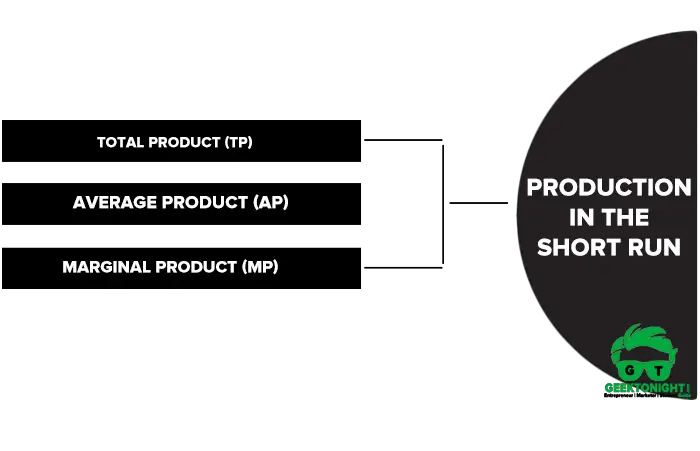The short run refers to a time period in which the supply of the inputs, such as plant and machinery is fixed. Only the variable inputs, such as labour and raw materials can be used to increase the production of the goods.
Table of Content [Show]
In other words, in the short run, change in production is brought by changing only one variable, while other factors remain constant.
The short-run production function is given as:
Q = f(L, K)
where,
L = labour, which is variable
K = Capital, which is constant
The law of production studied under short-run production is called the law of variable proportions or the law of diminishing marginal returns.
Production in the Short Run
For learning the law of production under short run, it is necessary to study about total product, average product and marginal product.
- Total Product (TP)
- Average Product (AP)
- Marginal Product (MP)

Total Product
It can be defined as the total quantity of output produced by an organisation for a given quantity of input. It is also known as total physical product.
Average Product
It refers to the ratio of the total product to the variable input used for obtaining the total product. It is the product produced per unit of variable input employed when fixed inputs are held constant.
The average product is calculated as: Average Product = Total Product/ variable inputs employed
Marginal Product
Marginal product refers to the product obtained by increasing one unit of input. In terms of labour, the change in total quantity of product produced by including one more worker is termed as marginal product of labour.
Marginal product of labour (MPL) can be calculated with the help of the following formula:
MPL = ΔQ/ ΔL
Where, ΔQ = Change in output
ΔL = Change in labour
ΔQ = new product – old product
ΔL = new labour – old labour
Leave a Reply